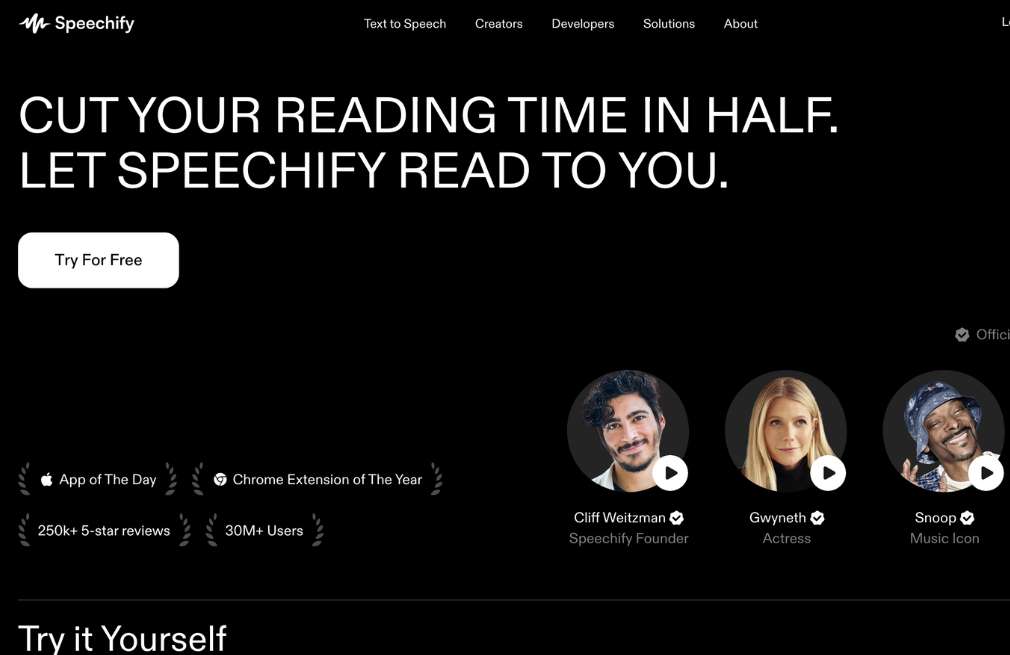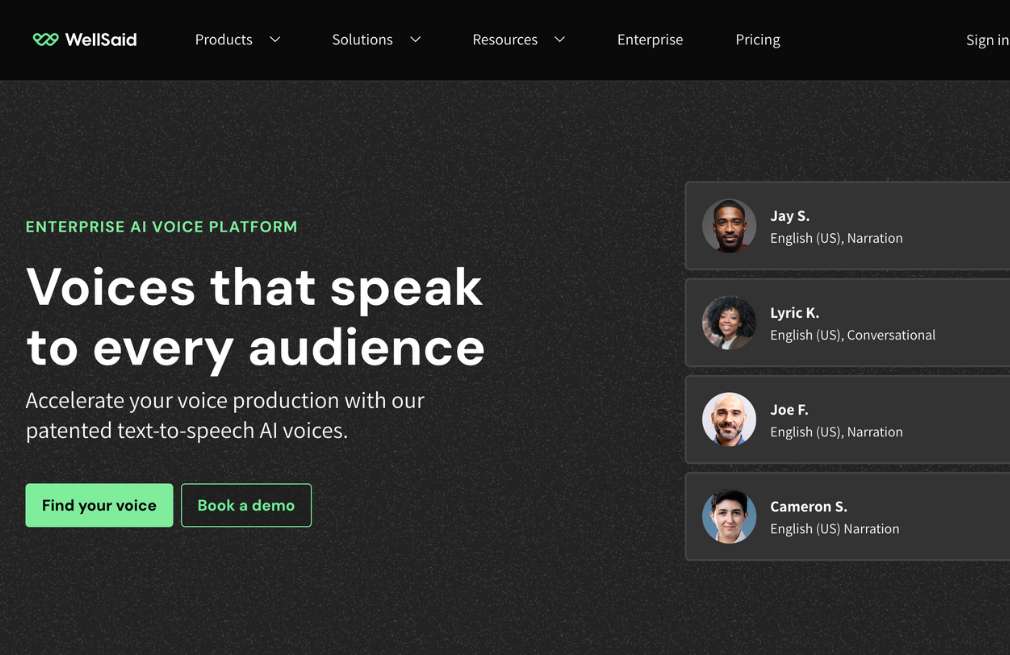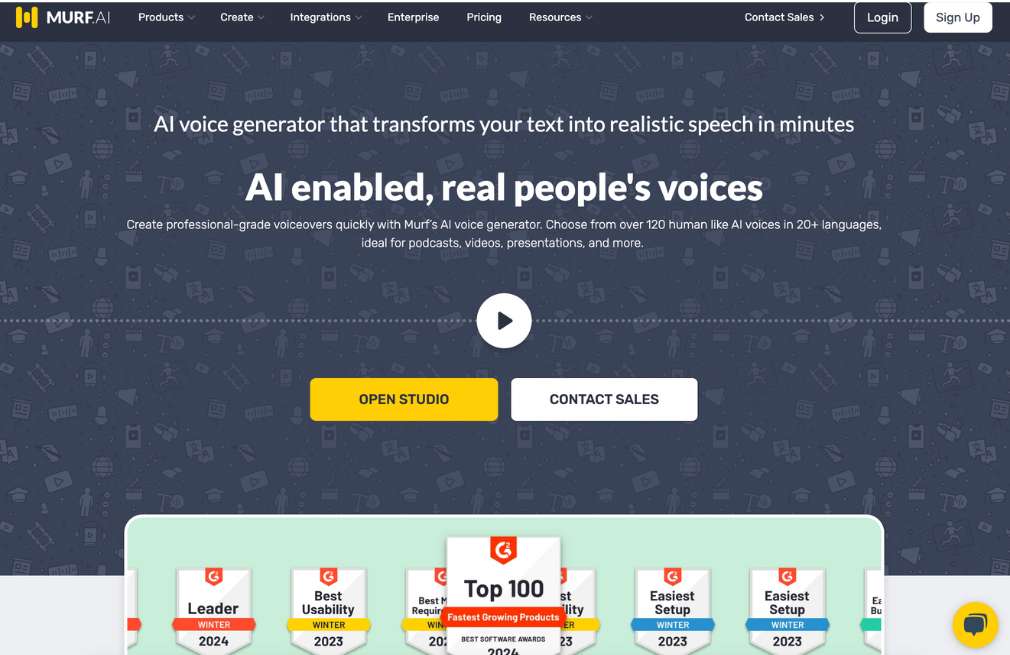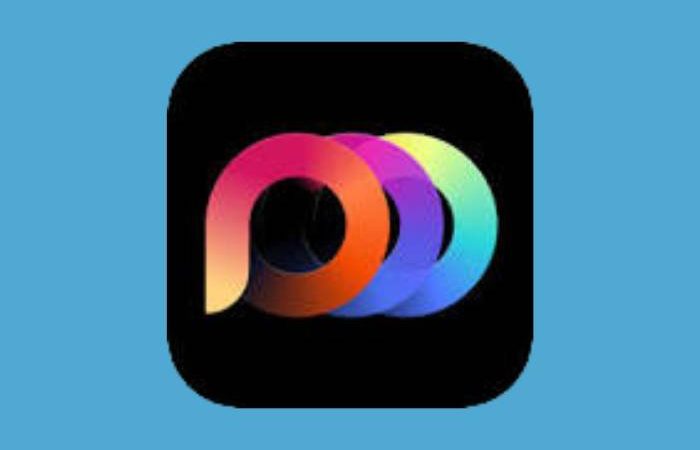
Best Text to speech generator (Free and Paid)
Imagine a world where your written words could instantly come to life, spoken by a voice so natural that listeners wouldn’t know it’s generated by a machine. That’s the power of text-to-speech (TTS) technology—a field that’s revolutionizing accessibility, content creation, and more.
As an author passionate about artificial intelligence (AI), I’m excited to share how text-to-speech generators are not just shaping the future, but they’re already impacting our everyday lives. Whether you’re a content creator looking to save hours of work, a marketer wanting to reach a broader audience, or someone with visual impairments seeking greater accessibility—there’s something here for everyone. What makes this space even more exciting? The incredible range of free and paid options that cater to diverse needs and budgets.
In this article, we’ll explore the top 9 text-to-speech generators available today and dive into how they work, who should use them, and what makes them stand out. By the end, you’ll have a clear understanding of which platform might best suit your needs. Let’s get started!
Table of Contents
9 Best Text-to-Speech Generators Overall
1. Speechify
Speechify is one of the most popular text-to-speech platforms, offering a simple yet powerful interface that turns text into highly natural audio. Known for its versatility, Speechify supports multiple devices and languages, making it a favorite for users across the globe.
Key Features:
- Supports 30+ languages.
- Natural-sounding voices, customizable with speed and tone.
- Multi-device compatibility: web, iOS, Android, and browser extensions.
- Ideal for turning e-books, PDFs, or web articles into spoken content.
What is it best for?
Speechify is excellent for people looking to listen to long-form content on the go. Its seamless cross-platform integration makes it perfect for students, professionals, and casual listeners who want to “read” books or documents hands-free.
2. WellSaid
WellSaid offers enterprise-level AI voice generation with realistic voiceovers. Its cutting-edge synthetic voice technology is highly popular among businesses needing professional-grade voiceovers for videos, eLearning, and presentations.
Key Features:
- Enterprise-level voice cloning capabilities.
- Offers multiple voice styles for different content types.
- Smooth, high-quality sound production.
- Ideal for professional use in corporate settings.
What is it best for?
WellSaid is best for companies or content creators looking for premium, polished voiceovers. It’s especially suited for eLearning, explainer videos, and corporate presentations.
3. Murf.AI
Murf.AI is a TTS platform with a focus on voice customization. Murf uses AI to generate high-quality voices for videos, presentations, and podcasts, offering users the ability to tweak voices and match them with specific content tones.
Key Features:
- Over 120 voices in 20+ languages.
- Advanced customization options for adjusting pitch, speed, and tone.
- Voice-over syncing with video.
- Text-based editing for seamless content creation.
What is it best for?
Murf.AI is ideal for video creators, podcasters, and anyone wanting to fine-tune voiceovers to suit a specific mood or brand voice.
4. NaturalReader
NaturalReader is a user-friendly platform that offers TTS for personal use, designed for people who need an efficient way to listen to digital text. It supports a wide range of file types, from PDFs to Word documents, and turns them into speech in just a few clicks.
Key Features:
- Intuitive, simple-to-use interface.
- Offline access with premium versions.
- Converts PDFs, eBooks, and other files into speech.
- Available for personal and commercial use.
What is it best for?
NaturalReader is a go-to for people with learning disabilities, vision impairment, or those who prefer listening to content. Its clean interface also makes it great for non-tech users who want quick, straightforward TTS solutions.
5. Lovo
Lovo is a powerful AI voice generator that focuses on hyper-realistic voices for creative projects. With its large library of voices, Lovo offers audio solutions for ads, games, and YouTube videos, and even allows users to create custom voices.
Key Features:
- A vast library of 180+ voices.
- Create custom voices with the “Voice Lab” feature.
- High-quality audio suited for creative projects.
- Supports multiple languages and accents.
What is it best for?
Lovo is an excellent choice for creators looking to add lifelike voiceovers to their ads, games, and films. Its Voice Lab is also ideal for businesses needing custom voice branding.
6. PlayHT
PlayHT is a TTS tool designed for content creators who want to turn written articles, blog posts, and newsletters into high-quality audio content. It offers a range of voices and gives you the ability to embed audio directly into your website.
Key Features:
- Wide range of natural-sounding voices.
- Embedding capabilities for websites and blogs.
- Text-to-speech conversions stored on cloud servers.
- Flexible pricing for businesses and individuals.
What is it best for?
PlayHT is best for bloggers, marketers, and businesses looking to provide an audio version of their written content. The ability to embed audio is a standout feature.
7. ElevenLabs
ElevenLabs offers AI-generated speech with an emphasis on replicating the nuances of human emotion. With its advanced speech synthesis, ElevenLabs is favored by voice artists and creators seeking authentic, emotion-filled narration.
Key Features:
- Realistic speech generation with emotional depth.
- Advanced voice customization for lifelike expressions.
- Great for longer-form content like audiobooks and podcasts.
- Easy-to-use interface with flexible controls.
What is it best for?
ElevenLabs is ideal for audiobooks, podcasts, and storytelling, where capturing emotions in a voice is crucial. It’s also well-suited for voice artists who want to experiment with lifelike speech generation.
8. Veed
Veed is primarily a video editing tool with a TTS feature. It allows users to convert text into speech for video projects, making it a favorite for content creators who want to streamline the process of adding voiceovers.
Key Features:
- Integrated TTS within a robust video editing platform.
- Supports multiple languages and voice options.
- Easy-to-use drag-and-drop interface.
- Available for use online—no software installation required.
What is it best for?
Veed is best for video creators who want an all-in-one tool for editing, subtitling, and adding voiceovers. Its simplicity and integration make it perfect for social media marketers and YouTubers.
9. Descript
Descript is an all-in-one audio and video editing software that includes a TTS feature. It’s a comprehensive tool for podcasters and video creators, with a focus on easy editing and voice replacement capabilities.
Key Features:
- Offers both TTS and audio/video editing.
- “Overdub” feature allows for precise voice cloning and correction.
- Ideal for creators needing seamless transitions between text and audio.
- Collaborative editing features for teams.
What is it best for?
Descript is great for podcasters and teams working on multimedia projects. Its “Overdub” feature is particularly useful for replacing or editing voice segments without re-recording.
How Does It Work?
Text-to-speech generators use artificial intelligence to analyze text and generate spoken words. The process typically involves three main components: text analysis, linguistic processing, and speech synthesis.
Advanced TTS platforms leverage machine learning models trained on large datasets to create voices that mimic human speech patterns. They analyze punctuation, phrasing, and intonation to produce smooth, natural-sounding voices that feel emotionally engaging and real.
Some platforms also offer voice customization, enabling users to adjust speed, pitch, and tone to create a voice that aligns with their specific needs, whether that be formal, friendly, or enthusiastic.
Who Should Use Text-to-Speech Generators?
Text-to-speech technology isn’t just for one type of user—it benefits a wide array of individuals and industries:
- Content Creators: Save time by using TTS for voiceovers in videos, podcasts, and ads.
- Businesses: Use TTS for automated customer service, tutorials, and presentations.
- Students and Educators: Convert textbooks and study materials into audio format for easier consumption.
- People with Disabilities: TTS opens doors for those with visual impairments or learning disabilities, allowing easier access to written content.
- Language Learners: Listen to foreign languages spoken with proper intonation and pronunciation.
Conclusion
The world of text-to-speech generators has never been more exciting, with options that cater to every need, whether you’re creating polished voiceovers for your business, audiobooks for personal use, or content for social media.
From the versatility of platforms like Speechify to the highly customizable voices of Murf.AI, the possibilities are endless. Whether you need free or premium services, TTS generators are becoming indispensable tools that enhance accessibility, creativity, and efficiency.
FAQ
Are text-to-speech generators free?
Some TTS platforms offer free versions with limited features, while others are paid. Most premium options provide advanced features like voice customization and high-quality voice output.
Can TTS replace human voice actors?
While TTS technology is highly advanced, human voice actors are still preferred for projects requiring deep emotional nuances
























